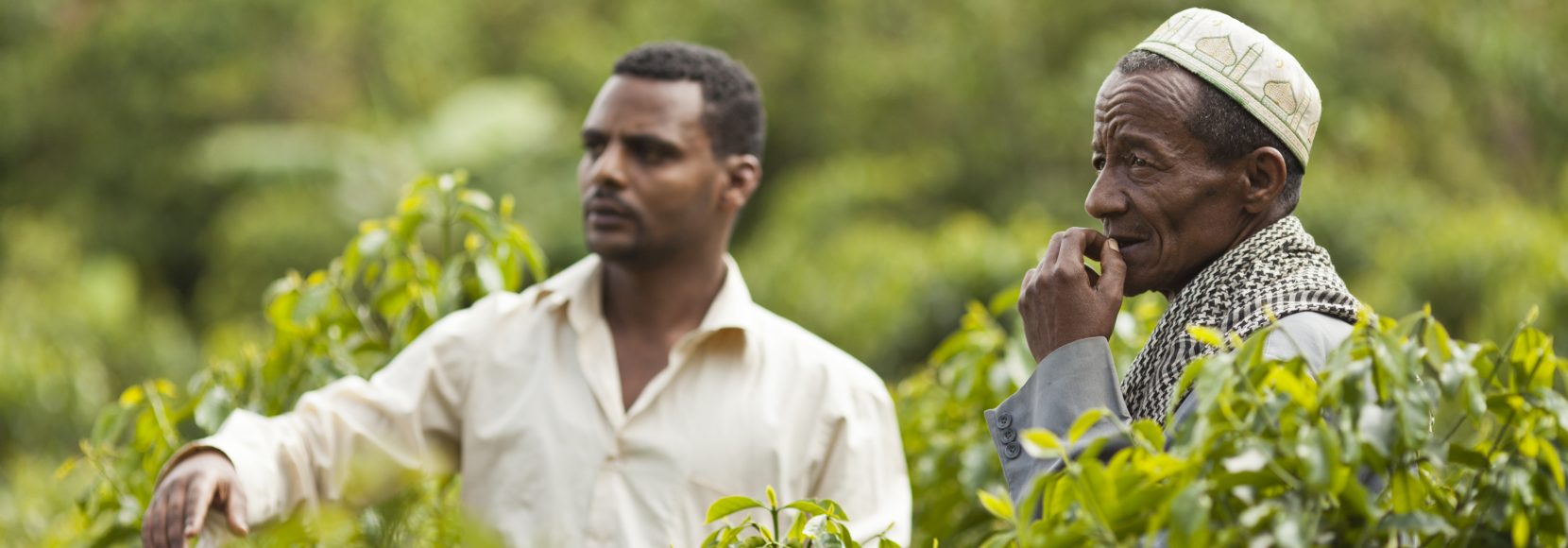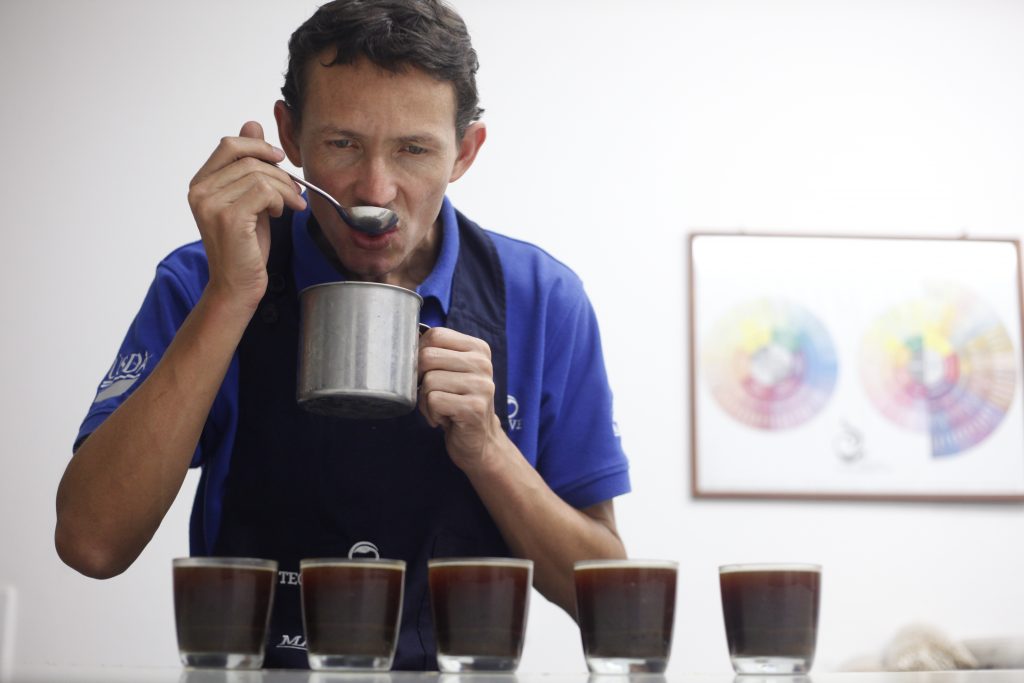
How Does Quality Control in East Africa Help Bring Your Favorite Coffee From Crop to Cup? Part 3: Cupping
In the final installment of this three-part series, Crop to Cup, learn how coffee processing – cupping, in particular – in East Africa affects the taste of your coffee and the prices that farmers receive.
In this series, we look at how three elements of coffee farming in East Africa bring coffee from crop to your cup:
- Coffee Farming: Across the region, decisions that coffee farmers make play an integral role in the quality of the coffee we consume
- Processing: Different processing methods lead to different coffee flavors and profiles
- Quality control: What happens in the quality control process determines which coffees make it onto the shelves of your store
Coffee Production in East Africa: A Recap
Roughly 80% of all coffee is produced by smallholder farmers.
In East Africa, millions of smallholder farmers form the backbone of the coffee sector and help to make the region one of the world’s most important coffee producers. By 2018, coffee production from Ethiopia, Uganda, Tanzania, and Kenya accounted for nearly 10% of all global production – and their share of global specialty coffee is even higher.
Coffee is an important cash crop in the region, enabling farmers to pay school fees for children and to purchase food and other household necessities.
Improving the value of coffee is crucial to helping smallholder farmers earn higher incomes and creating greater economic opportunities across the value chain.
But coffee goes beyond the farmers. Supporting others along the value chain to improve quality is critical, too.
What is Quality Control? Why Does it Matter?
At the most basic level, coffee quality control means making sure that coffee meets an expected standard, and it’s particularly important for a crop like coffee where farmers’ incomes depend on the quality of their crop.
Quality control happens at a variety of places throughout the coffee process, starting with farmers who pick out coffee cherries that are damaged by insects to wet mill workers who ensure that coffee is processed with clean water and dried properly and roasters who store the beans carefully. At every stage, small decisions like taking out a few bad cherries makes a significant impact on the quality of the final product.
The most important tool we have to identify and fix quality problems in the supply chain and ensure that the final product meets speciality standards is a simple and time-tested one: cupping.
What is Cupping – and How Does it Work?
Cupping is the process by which experts taste samples of coffee lots, score and evaluate them – and provide feedback that helps actors across the value chain adjust to improve quality. So, how does it work?
Cuppers – experts who are trained in cupping – learn how to describe and score coffee on an internationally recognized standard. This means they can calibrate their scores no matter where they are or what kind of coffee they’re working with.
Cuppers also help consumers decide which coffees to purchase by describing the characteristics of coffee that impact taste, including aroma, acidity, and flavor profile. For example, if a cupper notes certain fruity flavors, it could mean that the coffee is being over-fermented, and the mill needs to adjust its process; or a bitter taste like an unripe banana indicates that coffee is likely being harvested too early, which serves as a reminder to do selective harvesting, which means they only take ripe coffee cherries.
The lack of cupping in parts of East Africa is a huge obstacle because farmers, cooperatives, and mills can’t otherwise get reliable feedback on their coffee.
Cupping, Quality Control, and Gender in East Africa
In East Africa, TechnoServe is conducting training for cuppers and to install cupping labs, places where cuppings are held. Through the Sustainable Value Chain program, TechnoServe helped to install 35 cupping labs in four countries and trained 225 cooperative leaders and farmers on cupping. This allows cooperatives to better judge their own quality in order to make improvements, and also gives them a “common language” to speak with specialty coffee buyers, who greatly value cupping scores.
The Ethiopia AAA Program is a partnership between TechnoServe and Nespresso that will provide sustainability assistance and training to more than 100 wet mills and boost yields for some 30,500 farmers.
The goal for the programs is to ensure the coffee meets AAA Quality standards, which means the beans are meeting the highest grade set by the Specialty Coffee Association (SCAA), for buyers like Nespresso and Peet’s Coffee & Tea, which buy at premium prices and raise farmer incomes.

TechnoServe is also bringing a gender-inclusive approach to these challenges. Hebo Mulicha Cooperative is a wet mill in Ethiopia. At the time of its establishment in 1989, the cooperative had 100 members, 98% of which were male (including the whole leadership team).
The cooperative joined the 2016 cohort of the Ethiopia AAA Program. Despite undergoing the project’s sustainability, quality, and gender training, their leadership was hesitant to implement any changes.
In 2018 the cooperative elected a new executive committee, which underwent the program’s full package of trainings in 2019. One training that particularly resonated with the new leadership team was on gender inclusion. The new leaders quickly understood the importance of female participation in the cooperative, discussed the issue with their members, and facilitated a general assembly to encourage the election of women into leadership positions.
The general assembly resulted in the election of two female leaders and since then the cooperative has continued to make strides in increasing the inclusion of women. As of 2020, 20% of the cooperative’s members were female, which is a total of 122 members.
Dukale Teno, the cooperative’s chairperson, explained how the gender inclusion training shifted his perception of the role of women in cooperatives and how he plans to continue to increase female participation: “Before the trainings our awareness was limited – we didn’t even think we should even involve women, as traditionally men are more involved in cooperative leadership. However, I now believe in the potential of women and plan to increase their membership and leadership numbers even more than what we currently have.”
Demekech Nigatu, the newly elected credit committee manager, says that she “had no confidence” when elected into the cooperative leadership, but now has “developed confidence through practice.”
“My management role has been equal to the male committee members in the cooperative,” she adds.
This is the third and final installment of Crop to Cup. The first part of the series is here and the second is here.





